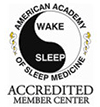888-503-2762
Hablamos Español
- Home
- •
- Telemedicine
- •
- DME Orders
- •
- Videos
- •
- SEC Non-Profit
- •
- Office Locations
- •


There are several treatments for sleep apnea, ranging from simple behavior modification to surgical procedures. The type of treatment and its duration will depend on the cause and severity of your problem. Your first step in treatment should be to speak with your physician and ask about being referred to a sleep disorders center; you can then be seen by a sleep specialist and, if necessary, have a sleep study performed.
About 70 percent of people with obstructive sleep apnea are overweight or obese, and as a first step their health care professional usually encourages them to lose weight.
In mild cases of snoring simple positional therapy may be effective; some people snore or have sleep apnea only when sleeping on their back, and they can eliminate or reduce airway blockage by learning to sleep on their side instead.
Proper sleep hygiene is also very important
in treating cases of snoring and sleep apnea, and you can view a list of suggestions for behavior modifications that will improve your sleep here:
Continuous Positive Airway Pressure (CPAP) appears to be the best and most effective medical treatment for Obstructive Sleep Apnea, and it is effective on 95% of patients with OSA. CPAP essentially utilizes a mask and controlled air flow to increase the air pressure in your throat: this prevents your airway from collapsing when you breathe in. To learn more about CPAP and other related treatments visit our link below:
Oral appliances are small devices very similar to orthodontic retainers. The device attaches to the teeth while sleeping to help prevent soft throat tissues from collapsing and obstructing the airway. Some of the devices hold the lower jaw forward during sleep while other appliances directly affect tongue position, and they are especially helpful to patients who are intolerant of the CPAP mask or suffer from mild to moderate obstructive sleep apnea. The appliance will not cure the apnea and/or snoring but works non-surgically to realign the jaw and/or tongue to keep the airway open: it must be worn each night to produce the desired effect. Regardless of how long it is worn, the symptoms of obstructive sleep apnea or snoring will return when the appliance use is discontinued.
There are several types of surgery for OSA, generally performed by an otolaryngologist (ENT). The most frequently performed surgery is a procedure where the soft tissue in the back of the throat, including the uvula, is cut away or reduced in size with a microwave needle or a laser. Although this may work well for snoring, unfortunately most patients who have sleep apnea are not adequately treated with these procedures: there are other more extensive surgeries that can be performed for sleep apnea. It is highly recommended that children with sleep breathing issues have an ENT remove their tonsils.
Orthognathic surgery has extremely high success rate and is considered as the only “cure” to OSA, however this is major facial surgery and needs to be discussed with an experienced Sleep specialist before it is considered as a viable alternative. In this type of surgery the lower jaw is separated and permanently advanced, opening the airway.
![]()